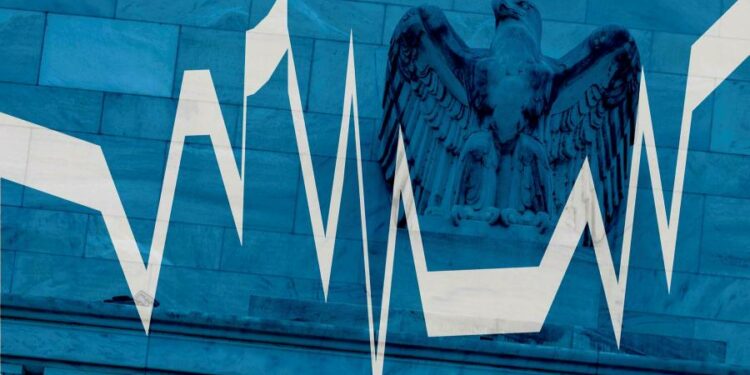European stocks wavered on Thursday as investors balanced monetary easing in China with the prospect of rapid rate rises in the US and geopolitical tensions over Ukraine.
The Stoxx Europe 600 index opened 0.3 per cent higher, buoyed by rallies in Asia in response to China lowering a key lending rate in a move analysts said would boost its flagging economy, before switching between small gains and losses.
This echoed an indecisive session on Wall Street on Wednesday where markets initially rose but ended lower, with the technology-heavy Nasdaq Composite closing in correction territory.
Futures markets implied Wall Street equities would recoup some of the previous session’s losses in early New York dealings, with contracts tracking the S&P 500 adding 0.4 per cent and those tracking the technology-heavy Nasdaq 100 gaining 0.7 per cent.
In Asia, Hong Kong’s Hang Seng index rose more than 3 per cent in response to China cutting its one- and five-year loan prime rates, easing funding costs for mortgage borrowers and small businesses. In Tokyo, the Nikkei 225 share index closed 1.1 per cent higher.
“China is becoming less of a macroeconomic risk,” said Samy Chaar, chief economist at Lombard Odier, after the nation’s gross domestic product growth decelerated to its slowest pace in 18 months in the quarter to December.
“But this is not the dominant story for European and US markets,” he said, with traders mostly focused on what the US Federal Reserve will signal at its meeting next week about rate increases and plans to shrink a balance sheet that has ballooned to $9tn after it bought vast quantities of US Treasuries from March 2020.
A warning by US president Joe Biden that Russia may “move in” on Ukraine, as well as the start of corporate earnings season, was also muddling the market outlook, Chaar added. “Push all this together and its clearly difficult to find a direction.”
In government debt markets, the yield on the 10-year Treasury, which moves inversely to its price and underpins global borrowing costs and equity valuations, was steady at 1.83 per cent. The two-year yield, which closely tracks monetary policy expectations, rose 0.02 percentage points to 1.04 per cent.
Futures markets have priced in about four rate rises by the Fed this year, with its main funds rate exceeding 1 per cent by December. The US central bank has tethered borrowing costs close to zero since March 2020.
US inflation hit an annual rate of 7 per cent last month, its fastest pace since 1982, while unemployment fell to almost pre-pandemic levels.
The Bank of England is also widely expected to raise rates by a quarter point at its meeting in two weeks. Data on Wednesday showed UK inflation hit a 30-year high of 5.4 per cent in December because of a broad increase in the costs of goods and services.
Sterling was steady against the dollar, buying $1.36, and was steady against the euro, purchasing about €1.20. The dollar index, which measures the UK currency against six others, rose 0.1 per cent.
Brent crude, the oil benchmark, fell 0.6 per cent to $87.87 a barrel but remained close to its highest level since 2014.











